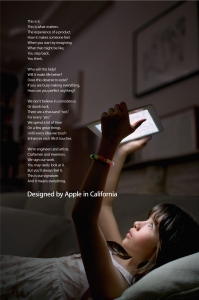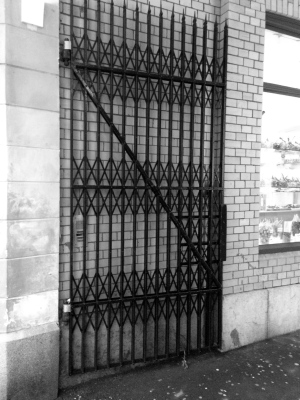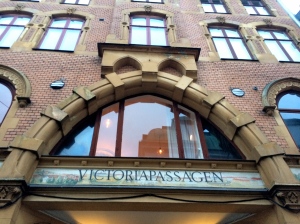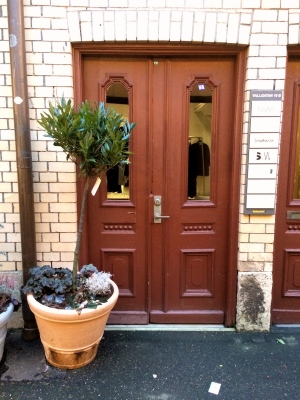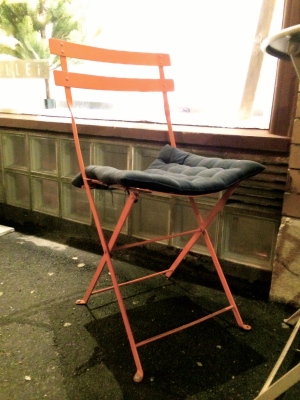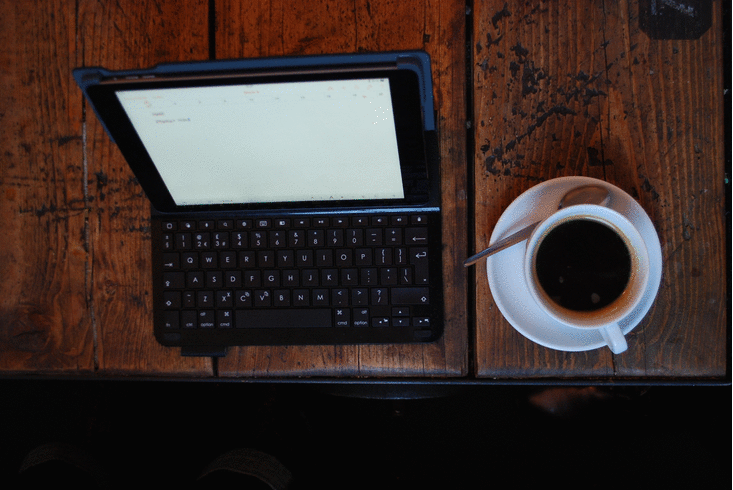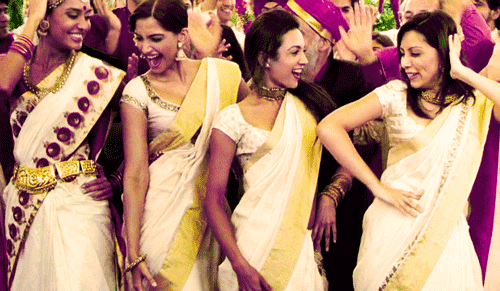
Curate Crazy

The other day I was browsing my favourite magazine shop ,which lies just of Curtain Road, when my eyes fell on a book cover that made my giggle. The concept of curators and curating have haunted me since our first session on the topic. It’s been followed by lengthy and confused discussions with fellow confused classmates. Hence, when reading the title of the book in the magazine shop I felt reassured I wasn’t the only one who had gone mad over curating. And I can only assume that David Blazer had been equally fascinated and amazed by it when writing “Curationism,How curating took over the art world and everything else”.
To curate is a verb that is becoming more and more household and it seems like every aspect of our lives can be curated. Originally the curator was a keeper or custodian of a museum or other collections though this role as evolved. Nowadays the curator have many areas of responsibility. Besides setting up exhibitions and making creative decisions about how objects are displayed he or she also have to be aware of the marketing aspect of the museum or gallery business.
In Daniel Blights article What happened to the expert curator? the position
of the curator and curatorial activity is being discussed and analysed to discover how it has evolved. Blight describes the curator in the 18th century as ‘a figure of intellectual authority’ (2013) acting in a elitist art world who saw their job as translate art to the general ‘uneducated’ public. Peter Ride cited in Blights article identifies how the curators role is changing from being gatekeepers of the institutions to encouraging public participation which Ride relates to a shift from expert to amateur.(2013)
We are all curators it seems. The word curator and to curate appears, to me, to have lost its value. What is really the difference of how we use curate in comparison to; editing, assembling, producing, directing or arranging? As well, the curator has since long expand its practice outside the art world.
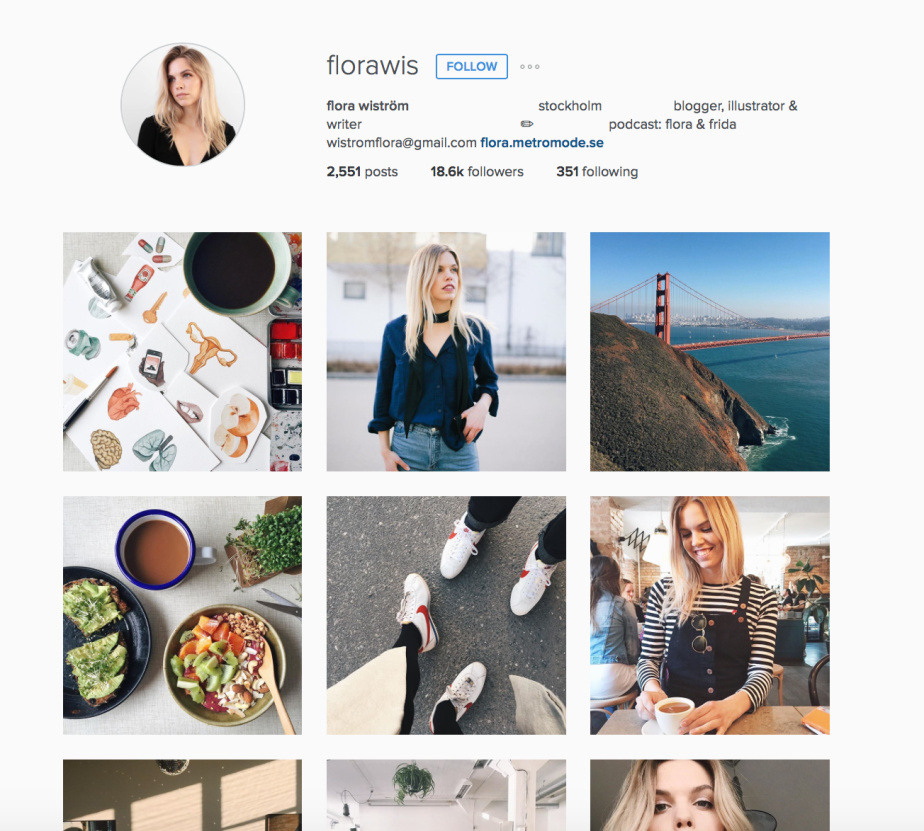
Why has this happened? Why are we so fascinated by curation? The point Peter Ride are making in Blights article about a shift from expert to amateur answers part of the question(2013). This shift reflects the fact that people of my generation, millennials, have more flexible job roles that requires them to do a bit of both and have a wider and shallower set of skills. The first example of this type of job that springs to my mind are bloggers. A blogger is a ‘slash’-worker of rank. You are probably not only a blogger but a blogger/writer/stylist/illustrator/ photographer/chef. When speaking of bloggers we should not fail to mention how a blogger constantly curates the blog content to fit the specific brand her or she has created. Well curated social media account of a lifestyle blogger? Thus, I find bloggers highly interesting to look at in terms of the current use of curator and curating as this terminology gives the slash-workers a umbrella to tie the knots together.
I’m not sure where I find myself in this discussion. To me the curator is still a figure linked to an art institution thought to curate is a term I would use more loosely. Only because you curate something doesn’t make you a curator in the same way that taking a photo with your IPhone doesn’t make you a photographer. Though, is this an equation that adds up or is it the elitism that still holds my thoughts in a tight grip?
References
Blights,D. (2013) What happened to the expert curator?, Available at: http://www.theguardian.com/culture- professionals-network/culture-professionals-blog/2013/ aug/23/art-curator-in-digital-age (Accessed: 2 February, 2016)
Monstera
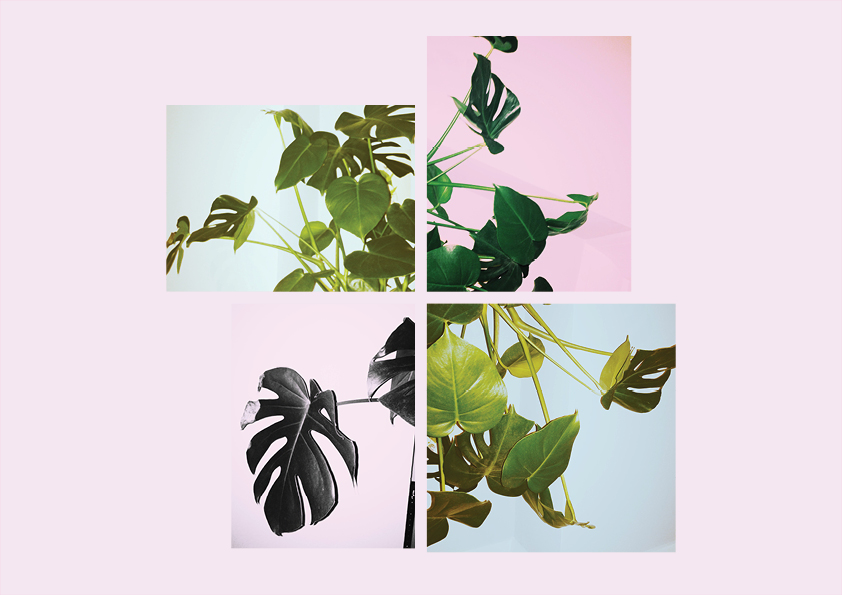
The Holga Manager

The first assignment we were given in the course Exhibition Studies asked us to start thinking of our future careers and imagine how it could play out. I’m quite a dreamer who enjoys visualising future scenarios, so I really enjoyed the task at hand. More specifically we faced the difficult task of choosing one object to represent ourselves as a designer, or in my case a design manager, in a future retro-perspective of our careers. I started speculating about my role as a design manager, what are my values, what inspires me and why does design matter in management?
My passion, as well as what I see myself doing in the future, is to spark creativity in people as well as in larger organisations. As a design manager I believe energy, imagination and integrity to be the key characteristics in defining me in my role. Hence when attempting to find this one object I was initially looking for an item that could embody these.
Finally, I opt for one of my dearest objects, a Holga 120 CFN. The Holga is a 120 millimeter film camera. It’s also known as a toy camera and it is it’s imperfections that make it special. The idea with the Holga is its light leaks which affects the process of shooting. When using the camera, you are continually experimenting, testing and finding ways of creating the desired image.
This idea of allowing imperfections to challenge and spark your creativity is what makes the Holga a great inspiration. When shooting with the Holga it’s all about the joy of photography and constantly having to adapt the ‘trial and error’ principles. This process is simliar to the definitions of the Design Thinking Process.
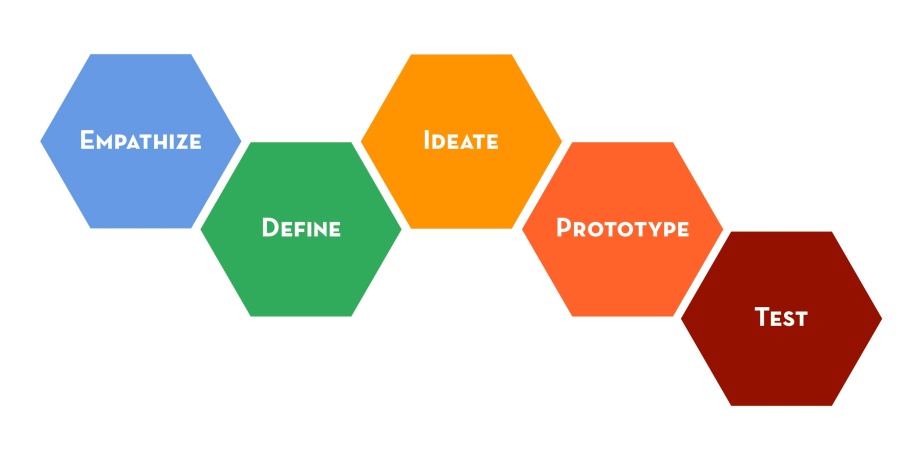
This way of learning and develop concept is what is discussed throughout the Ideation and prototyping. Hence what I do when shooting with my beloved Holga is in coherence what I value in my position as a Design Manager; playfulness, testing and resilience.
Mind blowing
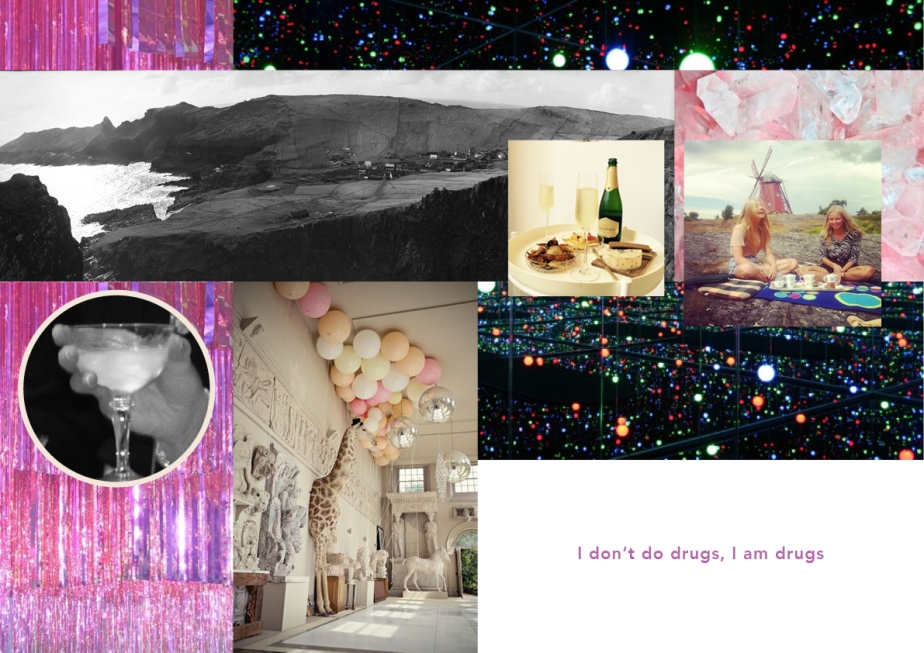
Wonder Productions
I would say that, for most of the time, I’m aware how advertising works. Or at least the obvious message they are trying to convey. It’s not too unfamiliar that perfumes are often sold by sensual bodies, food by looking fresh and crisp and Apple products by offering what you never could imagine you needed in your life.
How I see it, it isn’t the question of selling products anymore, its subordinate. So what it is that we are really consuming these days? A humble attempt to answer the question would be, identities. We are consuming ‘stickiness’ as Lidwell, Holden and Butler referred to it. In Universal Principles of Design the idea of ‘Stickiness’ is presented. Six variables are listed as contributing factors to creating ideas that lasts, that sticks.
- Simplicity
- Surprise
- Concreteness
- Credibility
- Emotion
- Story
When reading these six variables I had one of those aha-moments. I felt that these variables define branding (a question I have been attempting to answer for some time now) and what branding is trying to do. Creating ideas that last. Which at the same time, reminded me of M&C Saatchi’s slogan, an international advertising agency, ‘Brutal Simplicity of Thought’. A message should be so easy and powerful that you don’t hesitate to incorporate it in your life, and that’s what I feel good branding does, urge to be part of your life.
To some extent, in adapting these variables brands attempt to ‘become’ human. This aspect of advertising is highly criticized by Judith Williams in her article Apple in which she decodes an Apple advert. She discusses how the object on sale, an Ipad, is given life and put on a pedestal.
Apple asks in poem ,which is featured in the advert and refers to the Ipad, ‘Does it deserve to exist?’. Williams asserts that the focus on its existence ‘…turns the product, conversely, into a living being- since inanimate objects cannot be deserving or undeserving.’
Hence what Apple is selling, isn’t just the Ipad, it’s a friend, a living being.
I love my IPhone. I love Apple. I love a brand, how did that happen? How did my emotions get in the middle of me using a product to make phone calls and browsing Instagram? Emotions was the fifth variable in creating stickiness. The phone is stuck in my pocket alright. Emotions add that intangible value to a brand that I believe to be vital for successful branding. Hence, what the emotions does is creating a relationship to the company in question and with a relationship comes loyalty. Loyalty to a product.
Emotion and art was the topic for the podcast Philosophy Bites by Jesse Prinz we listened to in class. Prinz spoke about how emotions was the foundation in art and defining the one most important emotion as wonder. In attempting to answer the question of what is art? he and his podcast colleague formulated an definition in saying that ‘…art should be judged for its capacity for wonder.’ Artwork is a wonder production. Wonder Production.
This thing about wonder productions made me think of two things. Firstly, this could be a great name for the production company me and Paulina want to start and secondly, is wonder production what branding is all about? At the heart of art is emotions and its seems that it’s equally as true for branding. This thought is something I definitely would like to dig deeper into.
update: There’s already a production company called Wonder Production in Finland 😦
References
J.Butler, K.Holden, W.Lidwell (2003) ‘Stickiness’ Universal Principles of Design, Beverly, Massachusetts:Lockport Publishers, pp. 228-229
E.Lupton and A. Miller (1996) ‘Subliminal Seduction’ Design Writing Research, England:Phaidon, pp. 134-141
J.Prinz (2015) ‘Art and Emotion’, Philosophy Bites [podcast]
J.Williamson (2013) ‘Apple’ Source: The Photographic Review no. 76 Autumn, pp. 8-9
//Wk 2//
Branding, scratching the surface
For the past four or five years my interest in branding has grown. I find the branding of a person and the creation of a persona, a personal brand ID, especially intriguing. The idea that you can create somewhat of a character through enhancing a person’s uniqueness and building a story that surrounds this person is thrilling. Maybe this liking of the personal brand ID has grown from my own aspirations. My dream job is to become a professional mingler, meaning an excellent networker covered in glitter. Thus, I’ve felt it’s important to know how to best present yourself and enhance your desirability through the branding of oneself.
What is branding? This is the question that arose from our first session of Branding Choices.
I thought I knew what it was though after leaving the session I was equally confused as enlightened. Through browsing Sarah Fudin’s collection of 100 definitions of branding I’ve started to find my way through this jungle of branding.
‘Branding is the sum of the look and feel and voice of a company or organization that transfers into people’s experiences and perceptions of the company or organization itself.’
-Adam Braun
Adams Braun’s definition was one of the first to catch my attention. What Braun refers to as the look, feel and voice of a brand I would want to refer to as a personality. A personality and a person has all the factors listed by Braun as well as possessing a tangible value. When thinking of branding and a personality I envision branding as the crafting of a person that is sent out in the world to embody the company or organisation. It is sent out to make friends and establish relationships. Besides the tangibility of a personality there is also the fact that a person has a history, which lead my to David Funge’s definition.
‘’Branding is defining a distinctive set of characteristics and crafting stories across a variety of mediums that communicate and contextualize those characteristics in unique and immersive ways.’’
– David Funge
The way Funge talks about storytelling and the communication and contextualisation of these characteristics, a personality, is what attracted me to this definition. If feel that in using storytelling you create ownership and closeness to the brand. In our times it’s not about having a brand covered all in mystique, sure there might be mystique, but it has to be built in proximity to the user/customer. I feel it’s rather about being inclusive than exclusive, even though the group you include might be on the smaller end of the spectra. To create this interest and desirability for a brand may be achieved in various ways, do you want to play hard to get or is super-friendliness the direction for your brand?
A this point I see branding as something rather fluid and somewhat of a discipline of messing with people’s minds. I wouldn’t go so far as to say it’s brainwash, we’re too aware of how much efforts go into branding to be brainwashed at this point. Though there’s something about the way branding act, figuring out how we think to lurk in their brand in our consciousness, step by step until that day we say that we of course need the IPhone 7 even though the IPhone 6s is just launched.
References
Fundin,S. (no date) What is branding?, Available at: http://branding.sva.edu/what-is-branding (Accessed: 6 October 2015)
//Wk 1 Blog //
‘Victoriapassagen’, a hidden gem
On my winter break I travelled Sweden and my hometown Gothenburg. Whilst home I spent a great deal of time in one of my favorite spaces in Gothenburg, Victoriapassagen, drinking coffee and mingling. Victoriapassagen is a passage linking two parallel streets together. I have a history as a trading place, which is also its current use.
This passage is similar to the Parisian arcades, developed in the late 18th century followed by the Royal Opera Arcade and Burlington Arcade in London in 1817. (McKeith,1985) These arcades were also aimed at retail and providing a more sophisticated location for this rather than a open market. (McKeith,1985)
The alley is home to a café, fashion and interior stores, jewelry, florist and a paper shop. You may enter the passage form both directions and when you do so you enter under a fairly decorated arch. The ground is covered with asphalt and embellished with old chewing gums. The façade is made of yellow bricks and the window fittings are in a rusty red color. The alley is lit up by old-fashioned light bulbs arranged on metal arms that stretch out from the rooftops.
The aesthetics of the passage is genuine and the place doesn’t try to hard to be something it is not. It is a bit dirty and things are broken but that doesn’t bother anyone. It is an inviting environment where it is easy to feel at home. If thinking of the passage as a person it would see someone somewhat older, not afraid of ageing though by tasteful and ‘trendy’ accessories keeping up a modern and young appearance. A person with a relax attitude person I would be happy to befriend.
Reference
McKeith, M. (1985) Shopping Arcades: A gazetteer of extant British arcades. London:Mansell Publishing Limited

